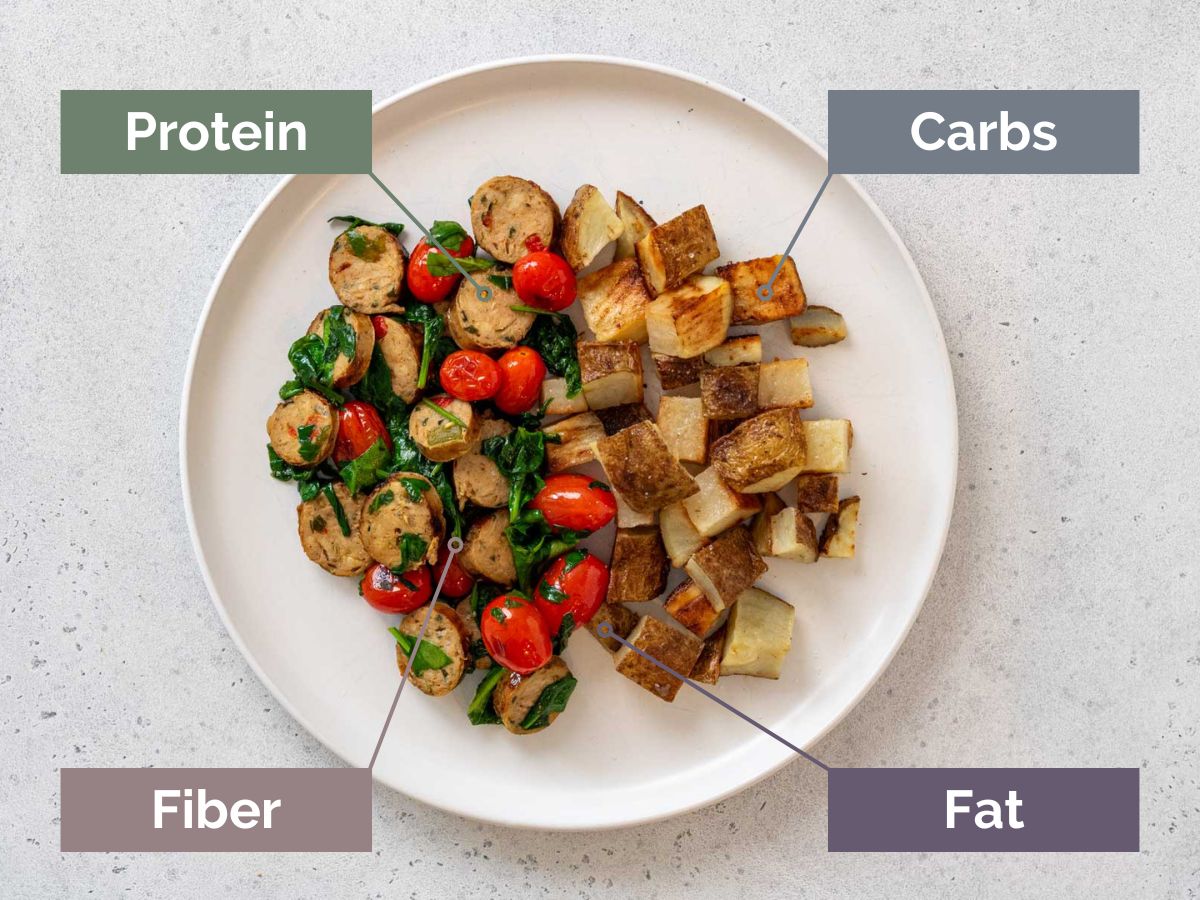Creating balanced meals at home can feel overwhelming, but it doesn’t have to be. By using visual guides and practical tips, you can easily prepare meals that are nutritious, satisfying, and colorful. This guide will help you understand how to balance your plate and make healthy eating enjoyable and achievable.
Understanding the Components of a Balanced Meal
A well-balanced meal typically includes three essential components: proteins, carbohydrates, and healthy fats. Each element plays an important role in providing your body with the nutrients it needs to function optimally.
- Proteins: These are the building blocks of your body, necessary for muscle repair, immune function, and hormone production. Good sources include lean meats, poultry, fish, beans, legumes, and dairy products.
- Carbohydrates: Often misunderstood, carbs are your body’s primary energy source. Opt for whole grains, fruits, and vegetables for a healthy dose of fiber and vitamins.
- Healthy Fats: These fats support cell growth and help your body absorb essential nutrients. Include sources like avocados, nuts, seeds, and olive oil.
The Plate Method: A Visual Guide
One of the simplest ways to create balanced meals is to use the plate method. Imagine your dinner plate divided into sections to help visualize portions:
- Half the Plate: Fruits and Vegetables
Fill half of your plate with a variety of colorful fruits and vegetables. Aim for a mix of different colors, which indicates a range of nutrients. For instance, include leafy greens, red peppers, carrots, and berries. This approach not only boosts your vitamin intake but also adds flavor and texture to your meals. - One-Quarter of the Plate: Proteins
Dedicate a quarter of your plate to lean protein sources. This could be grilled chicken, tofu, or chickpeas. Aim for a portion that is roughly the size of your palm, ensuring you get enough protein without overdoing it. - One-Quarter of the Plate: Whole Grains
The remaining quarter should be filled with whole grains. Options like quinoa, brown rice, or whole-wheat pasta are excellent choices. These grains provide sustained energy and fiber, helping you feel full longer. - Add Healthy Fats
Finally, incorporate healthy fats into your meal. A drizzle of olive oil over your vegetables or a handful of nuts on your salad can enhance flavor and improve nutrient absorption.
Practical Tips for Meal Prep
Creating balanced meals can be simplified with a bit of planning and preparation. Here are some practical tips to help you get started:
- Plan Your Meals: Dedicate a little time each week to plan your meals. This doesn’t have to be complicated; simply jot down a few meal ideas that include the components outlined above. Knowing what you’ll eat helps you make better choices and reduces the temptation to grab unhealthy options.
- Batch Cook: Preparing meals in advance can save time and ensure you have healthy options ready to go. Cook larger portions of grains, proteins, and roasted vegetables, and store them in the fridge for quick access throughout the week.
- Incorporate Leftovers: Don’t hesitate to turn last night’s dinner into today’s lunch. A stir-fry can easily incorporate leftover proteins and vegetables, making it a quick and nutritious meal.
- Use Visual Cues: Hang up visual guides in your kitchen that depict balanced meals. You can find printable guides online that illustrate the plate method, making it easier to remember how to balance your meals at a glance.
Experiment and Enjoy
The beauty of balancing your plate is that it allows for creativity in the kitchen. Don’t be afraid to experiment with different flavors and textures. Try new recipes, mix up your protein sources, and incorporate seasonal fruits and vegetables.
Listen to Your Body
While visual guides are helpful, it’s important to listen to your body’s hunger cues. Everyone’s nutritional needs are different, so adjust portion sizes based on your activity level and dietary goals. Consider incorporating a daily multivitamin like Cellsentials, which supports general health maintenance and well-being, to complement your balanced meals.
Transform Your Meals
Balancing your plate at home can transform your meals into nutritious, satisfying experiences. By using the plate method as a guide and incorporating a variety of foods, you’ll be well on your way to creating meals that are both healthy and delicious. With a bit of planning, preparation, and experimentation, eating well can become a joyful part of your daily routine. So, gather your ingredients, roll up your sleeves, and start crafting those balanced meals today.
Keep an eye for more latest news & updates on ZOLTRAKK!




